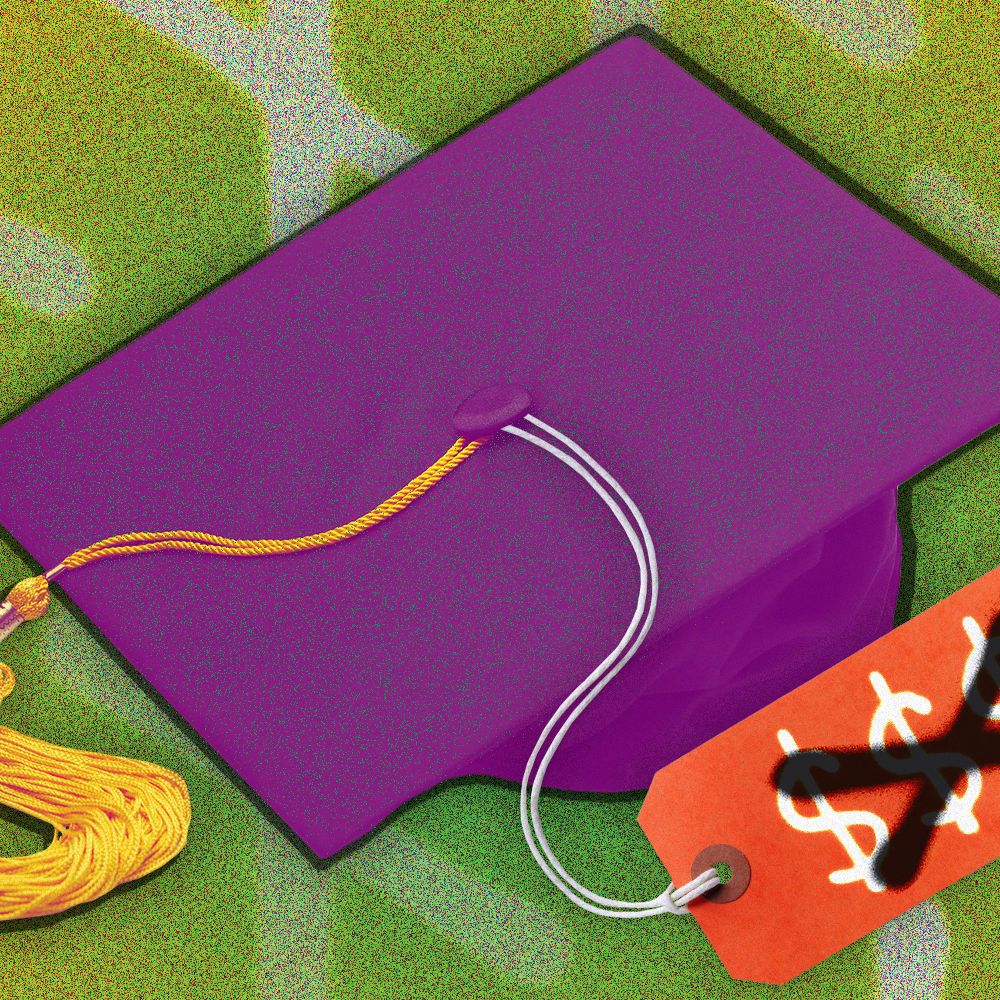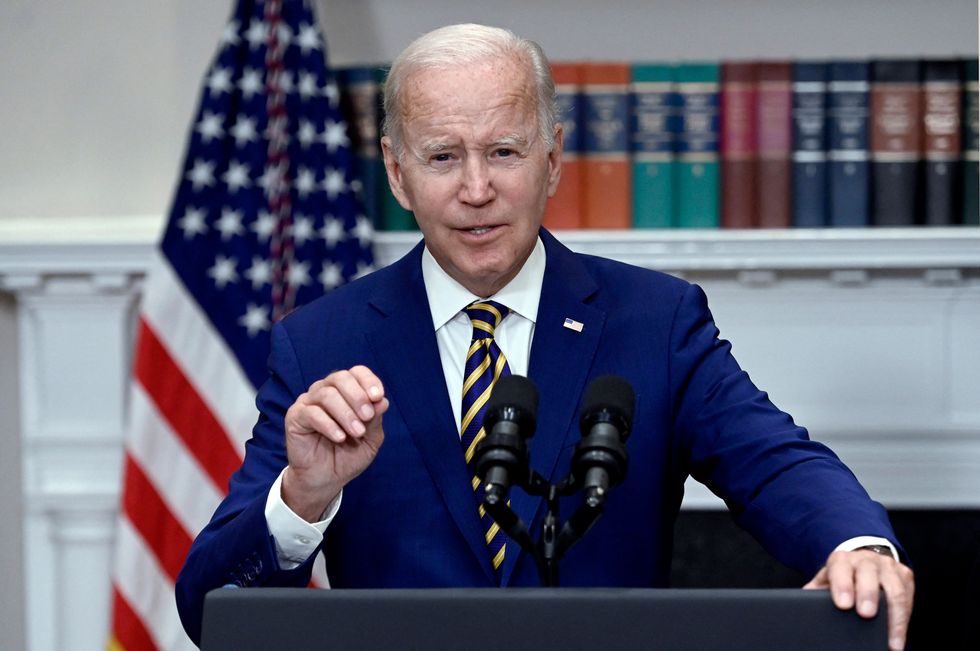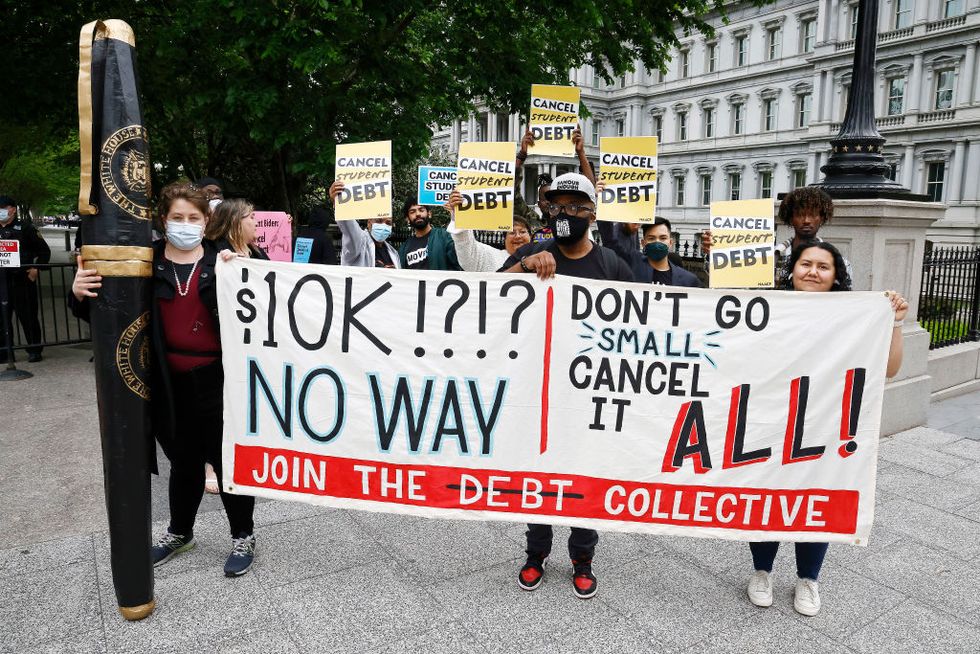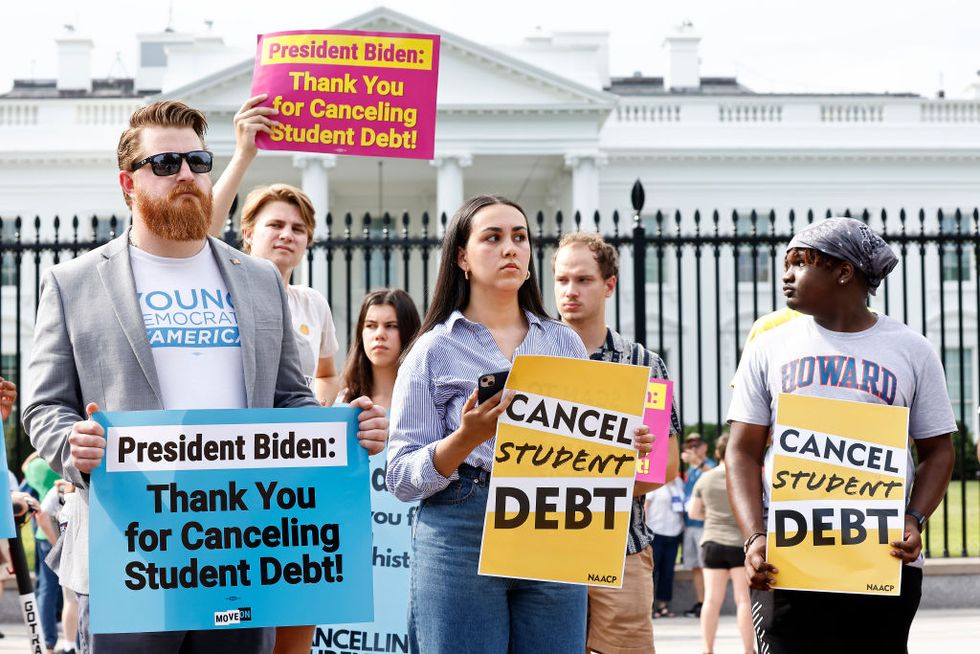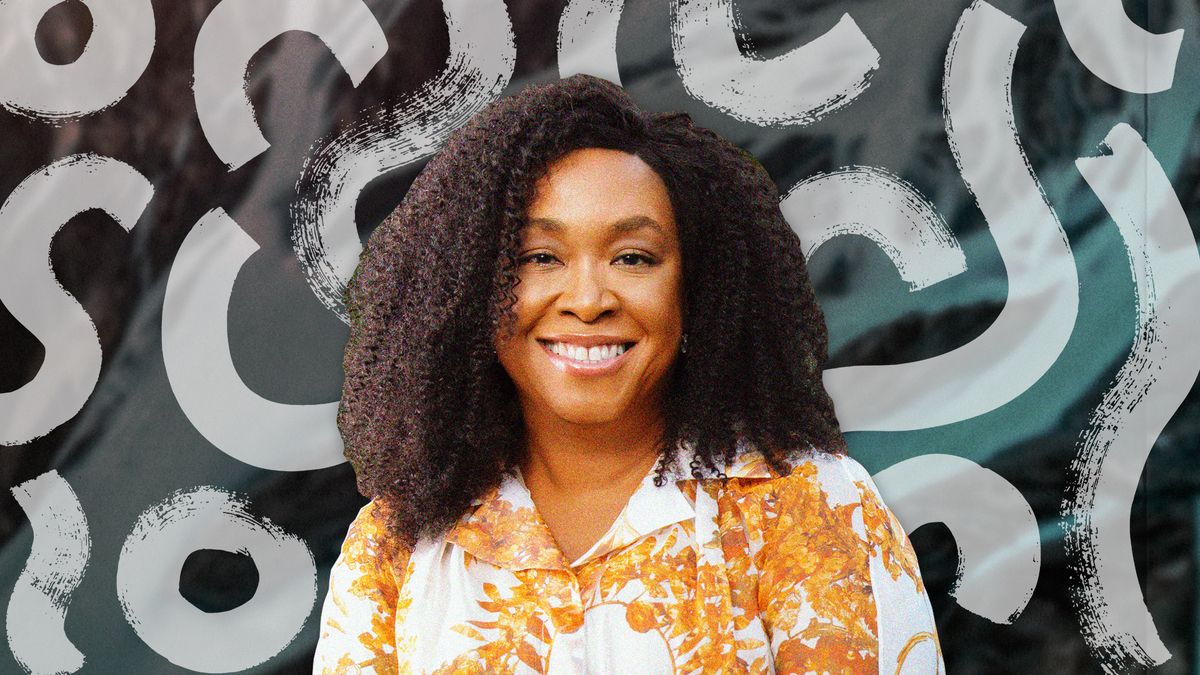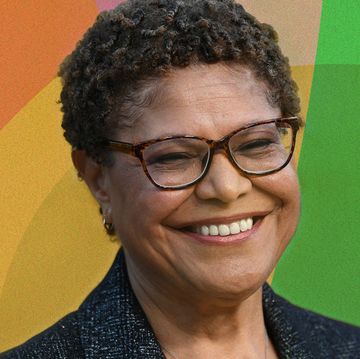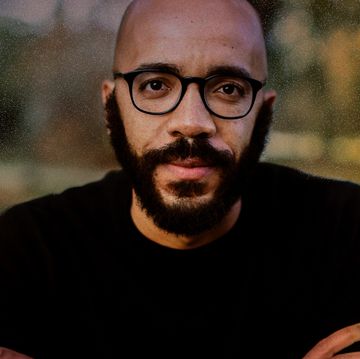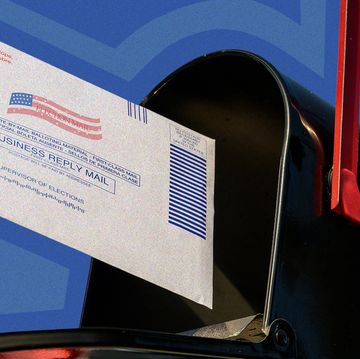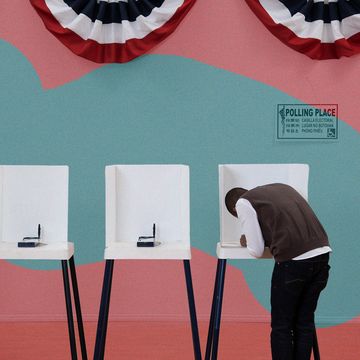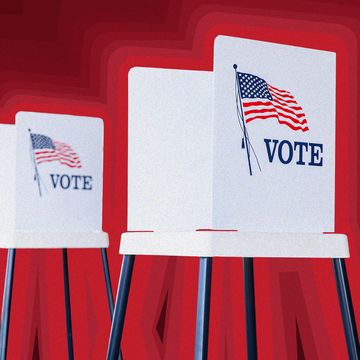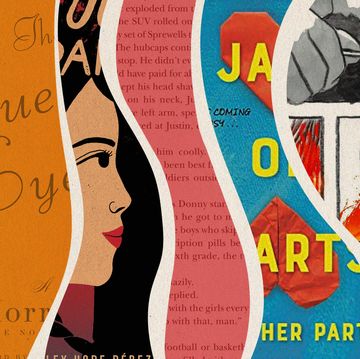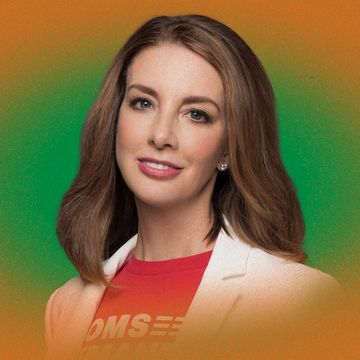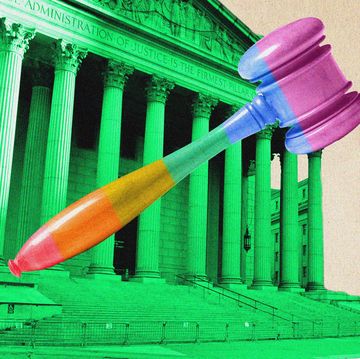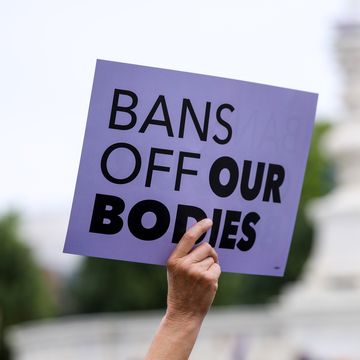In the Shondaland series Financially Fearless, we’re getting candid about how money impacts everyone’s lives. Our solutions will detail how to boost your financial well-being, trim overspending, craft a budget, and discuss money matters with loved ones.
For some people, the phrase “student loan debt crisis” is an abstract concept, but for Tasha Cole, it’s very much a real thing.
“The last I checked,” she tells Shondaland, “it was $300,000.”
That’s a monthly payment of about $2,400 — roughly the starting price for a one-bedroom apartment in Los Angeles, where the 52-year-old lives. She’s a social worker, a job with a starting salary of about $47,000 a year. For the math-challenged, that makes keeping up with her loan payment — which ballooned due to high interest rates, she says — and other expenses such as housing, food, and transportation (costs that student loans do not take into account when factoring a monthly payment) impossible. “How can I ever get [add “out”?] from under that? It’s literally never going to go away.”
Cole went back to school to get an advanced degree after a divorce, thinking it would help her career and increase her wages. It did, but not enough to account for the cost of living, inflation, and interest. The large amount of debt looms over her, generating stress and anxiety. “That’s a lot of money,” she says. “It impacts your whole life.”
Millions more feel the same way. Some 45 million borrowers have federal student loans, according to the White House, with the typical undergraduate student looking at a $25,000 bill after college. There’s a cumulative $1.6 trillion cloud hanging over the nation’s collective head, the White House reports.
Of course, President Joe Biden’s announcement in August, which promised to erase up to $10,000 for borrowers who earn less than $125,000 per year ($250,000 for married couples), and up to $20,000 for those with Pell Grants, marks a historic acknowledgment from the federal government of how bad the student loan debt situation is — a strain on the economy and people’s personal lives that prohibits them from buying a home, having children, starting a business, or untold other parts of the American dream. And while the latest action — which was in part a response to pressure from activists and party leaders urging cancellation of all student loan debt — represents progress, it is just a tiny drop in the ocean, many say.
“We’re talking about a massive number,” says Braxton Brewington, a spokesperson for the Debt Collective, a debtors’ union that was formed and galvanized to advocate on behalf of people with all kinds of debt, student loans included. “Student loan debt is at nearly $2 trillion — more than medical and credit card debt combined. It can all be erased with the click of a pen. It’s hampering lives, and even more so if you are Black.”
It’s true. Black students, like Cole, tend to borrow more, studies show, and owe more. Compounded with the fact that Black and Latino Americans earn less than their white counterparts and Black and Latina women earn less than men, student loan debt can feel, for a lot of people, like a trap. “I was a teacher when I married,” Cole says. “You know they make little money, but in order to be a teacher, you need certain credentials. But why would a teacher need a student loan that’s $125,000?” Her debt impacts her family as well. She says that when her daughter filled out an application for a loan recently, one of the questions was “Did either of your parents graduate college?” “Why would they ask that?” Cole says. “It’s like this trap is getting larger.”
For her, the $10K relief is inadequate, particularly since President Biden said on the campaign trail that he’d eliminate all undergraduate tuition-related federal student debt from two- and four-year public colleges and universities for debt-holders earning up to $125,000. “I feel like African Americans were bamboozled,” Cole says. “During Covid, the debt was paused with a click of a button. So, they could eliminate it with a click of a button. Why must we go through all these hoops?”
Natalia Abrams, founder of the Student Debt Crisis Center, agrees that while it’s a step in the right direction, the $10K relief is too little, too late. “We’re called ‘Crisis’ for a reason,” she says, noting that for many borrowers, it’s the interest on the loans that makes paying them a challenge. “Student loan borrowers are not asking for a handout — they’re asking for equity and fairness. They don’t understand why they are paying for loans several times over.”
Debt activists contend that the whole student loan structure is laden with inequities down to its very roots. “There was a time when college was free, or low cost,” says Brewington. And those who say, “If you borrow money, you should pay it back,” may not only be forgetting that the U.S. government bailed out Wall Street, the auto industry, and the airline industry, but may also not know why college got so expensive in the first place.
In the late 1960s, then-California Governor Ronald Reagan’s contempt for the “hippie” anti-war culture on college campuses, like in Berkeley, California, led to a conservative backlash against free higher education in general. On the recommendation of an economic adviser who warned about the dangers of an “educated proletariat” (working class), Reagan helped usher in a whole new way of thinking about college, ultimately resulting in a plan to increase tuition. Of course, tuition at federally funded state schools has continued to shoot up since then (to say nothing of private schools or for-profit colleges accused of defrauding students).
Further muddying the issue: In 2005, 18 Democrats broke ranks with the party to back a Republican-sponsored bill to make student loans ineligible for bankruptcy protection. By 2009, when the University of California unveiled a plan to increase tuition 32 percent, students had had enough, sparking protests; Abrams’ Student Debt Crisis Center was born from that pushback. “This is a civil rights issue,” she says. “It is a multigenerational issue but impacts mostly young people. Canceling student loan debt will increase the GDP, consumer spending, and faith in the government.”
Opponents of student loan debt cancellation argue it won’t actually do much to help the economy. But those working on this issue, like Rosa Clemente, an independent journalist who once ran for vice president as a member of the Green Party in 2008, say that pushback against student loan relief cannot be untangled from the political history that created the debt in the first place, and the capitalist structure that puts profits over people.
Much like Cole, Clemente — who has an undergraduate degree, a master’s degree, and is working on a Ph.D.— feels like she was led into a trap. “My generation was taught that if you don’t go to college, you won’t have a life,” says the 50-year-old. “I did make the choice to go to college, but they marketed it to us and encouraged us to take out these loans.”
And when your parents can’t exactly afford upward of $35,000 to send you to school, you see your only options as signing a loan or working at low-wage jobs. Her total student loan debt is, like Cole’s, at about $300,000, which makes home ownership impossible. As of now, her loans are deferred, and she plans to join a group of more than 50 borrowers who’ll go on strike and just simply not pay their loans when payments resume in January 2023. “I’m not giving them three grand before I pay rent or put food on the table for my family.”
She says, “People take out loans for a lot of reasons. When small businesses fail, they get help. Banks, automakers — they got bailed out, and nobody had a problem with it. There’s millions of dollars going to Ukraine. I don’t understand why they won’t just sign the bill and eliminate all of it.”
Malcolm Venable is a Senior Staff Writer at Shondaland. Follow him on Twitter @malcolmvenable.
Get Shondaland directly in your inbox: SUBSCRIBE TODAY
